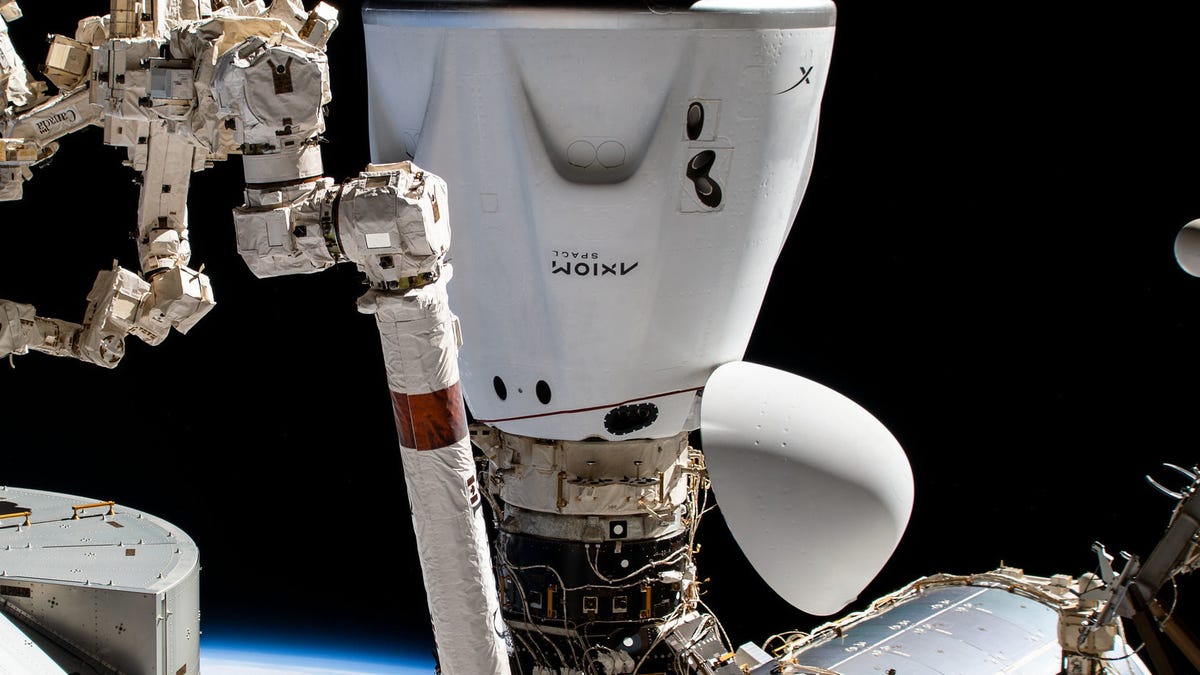See the ISS, a Spacecraft and a Blazing Meteor in One Incredible Video
A camera meant to capture fireballs also caught sight of the space station and the Axiom-1 mission on its way home.
The Axiom-1 mission -- the first fully private crew to visit the International Space Station -- splashed down on Earth on board a SpaceX Crew Dragon last week. During that return journey, a camera meant to track meteors also caught sight of the spacecraft, the ISS and a blazing fireball at the same time. Wow.
The European Space Agency Operations Twitter account shared the video on Friday, writing, "An incredible sighting: a meteor strikes, burning up in Earth's atmosphere, passing by four astronauts cocooned in the SpaceX Crew Dragon spacecraft as it departed from the International Space Station on 26 April, bound for home."
An incredible sighting: a meteor strikes, burning up in Earth’s atmosphere, passing by four astronauts cocooned in the @SpaceX #CrewDragon spacecraft as it departed from the International Space Station on 26 April, bound for home.
— ESA Operations (@esaoperations) April 29, 2022
☄️🧑🚀👨🚀🧑🚀👨🚀🚀🌍
©️#AllSky7 Fireball Network pic.twitter.com/HQ8IR89jb1
The meteor is pretty clear in the video. It's the one dragging out like a fiery smudge heading downward. The ISS is the brightest moving dot, above and to the right of the meteor. Crew Dragon is the fainter dot above the streak of light.
The camera that filmed the extraordinary occurrence is part of the AllSky7 fireball network, a project that watches for and documents meteors using a system of cameras trained on the sky.
The spacecraft and the ISS were never in danger from the meteor. ESA said the fireball passed hundreds of kilometers away from the spacecraft.
The video doesn't look like a Hollywood production. It's not hugely dramatic. It's three points of light doing their thing. Those illuminated flecks represent something grand: human spaceflight and Earth's connection to the wider universe. Two of the points of light are there because of human ingenuity and effort. One is an object that's been flying through our solar system only to meet its demise as a beautiful streak in our planet's atmosphere. Together, they make beautiful visual music.


